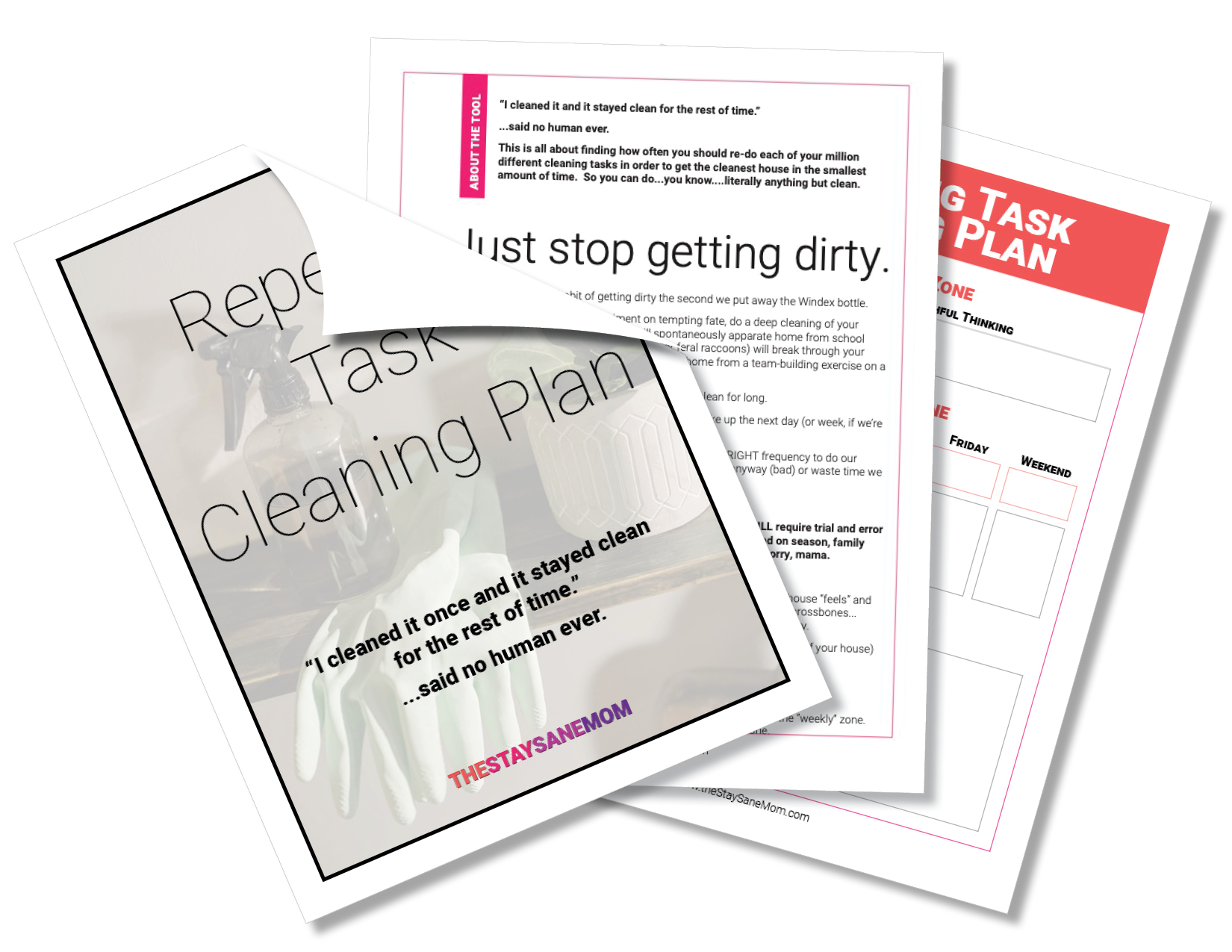5 Easy Steps to a Clean Garage

5 Easy Steps to a Clean Garage
For those of you out there who are dreading what could exist in the back of your decoration infested garage cabinets, here's how to change your garage from a clutter-filled nightmare to almost a real room in your house.
Written by Liz Bayardelle, PhD | See Comments | Updated 04/22/2019
Want to cut to the chase?
Repeating Item Cleaning Plan

5 Easy Steps to a Clean Garage
This post contains some affiliate links for your convenience. Click here to read my full disclosure policy.
The garage is one of the easiest areas to forget about.
One holiday season leads to another, decorations pile up, tools breed seemingly of their own volition, and before you know it your garage has turned into something from an episode of Hoarders.
It can often be the case, particularly if used as a storage area while moving in, that your garage slowly becomes less usable over time.
It might not be that you have a lack of space in the garage, just too much stuff. It might also be that you haven’t organized it since you first moved in, and your stuff has doubled in volume since then.
Unfortunately, a messy garage will just feel like more and more of a burden the longer you procrastinate sorting it all out.
So, for those of you out there who are dreading what could exist in the back of all of those cabinets, let's get right to it. Here's how to change your garage from a clutter-filled nightmare to almost a real room in your house.
Step 1: Separate Seasonal Stuff by Season
The garage is where unused decorations go to die.
You got all that cutie Christmas stuff when you were in the holiday spirit, but now it's July, and you dread the thought of weeding through all those glitter infested reindeer antlers you thought were a good idea.
Invest in some of these babies and separate everything into one box per holiday:
If you need multiple boxes for the major holidays (Christmas stuff can get bulky...Halloween even more so), feel free, but the one rule here is that no box has stuff for more than one holiday.
The purpose of this exercise is that when holiday rolls around, you can pull out a finite number of boxes and have complete surety that everything you could possibly need is within those boxes.
Then, when the holiday is over, everything goes back in the box where it came from and doesn't have to be seen, weeded through, pushed aside, or dealt with for 364 more days.
Step 2: Utilize Proper Shelving
Just as was the case inside your house (as you read about when we talked about how to keep a clean house), shelving, storage, and organization makes all the difference in the world.
You might only have 50 square feet total of storage space in your garage, if you're lucky, if you're only counting floor space or existing cabinets. However, if you get some strategic shelving involved, you can easily double or triple this.
A few hanging hooks like these bad boys could help you lift a bike for wall storage when not in use:
The essential precepts here are as follows:
-
More shelves aren't necessarily better, but useful shelves are.
-
Additional shelving does cut down on square footage, so don't put shelves anywhere you need to park your car or anywhere that is going to make your garage feel too cramped.
-
Know what you're going to put on the shelves before you buy them. This will help you buy the right number of shelves for the height of your garage.
-
Containers are your friends.
Step 4: Have Functional Mechanics
Garage doors are essential to get right.
This sounds like a no-brainer, but I have no way too many people to live in houses with non-functioning garage doors.
Not only does this contribute to the resale value of your home, but if you are having to pull on a tennis ball on a string and say a prayer just in order to get your car out of the house each morning, it's really taking a dip out of your quality of life, whether you know it or not.
If your garage doors don't actually work, set aside a hundred bucks or so each month until you can afford new ones.
This goes for other things that don't work in your garage as well. Water heaters, air conditioning units, whatever machine are you actually have in your house should be functional.
Seriously.
You're a grown up now.
Have functional things.
Step 5: Buy a Label Maker (or Get Some Duct Tape and a Sharpie)
This is one of the three steps you will see over and over in all of my home organization blogs.
There is one way (and one way only) things will be organized:
Each item needs one place it could live, and it needs to live there. This has to be logical and labeled.
If you are looking for extra house paint to do some touch-up work, there should be in a bin in your garage labeled “paint”.
If you are looking for a wrench or a screwdriver, you should not have to go hunting through nine different places where screwdrivers might live in order to find the one you want. All your screwdriver should be in one logical place, and it being labeled “tools” or “screwdrivers”.
Basically, if you could not describe to a five-year-old how to find any object in your house, it is not organized properly, at least in my opinion.
So, get one of these little buddies:
Or get a roll of white duct tape and a heavy duty sharpie and start labeling.
Especially in the garage, where you don't need to make everything look like a professional designer just sneezed magical HGTV dust on everything, there's really no downside to excessive and compulsive labeling.
Start Your Next Step
Repeating Item Cleaning Plan

Get Sanity, Delivered to Your Inbox.
Care to Share?
About the Author

Liz Bayardelle, PhD
Founder | Contributor
Liz (or Dr. Mommy, as her toddler started calling her after learning what a PhD was) is the happily sleep-deprived mom of a toddler (and professional raccoon noise impersonator), a sparkle-clad kidnado, a teenage stepdaughter, 200 cumulative pounds of dog, and herd of dustbunnies (if daily vacuuming doesn't occur). During nights and naptimes, she uses her PhD in business psychology as an author, speaker, and consultant. She also serves as an executive and principal for three companies, two of which she co-founded with her very patient (and equally exhausted) husband.








-Budget.jpg)